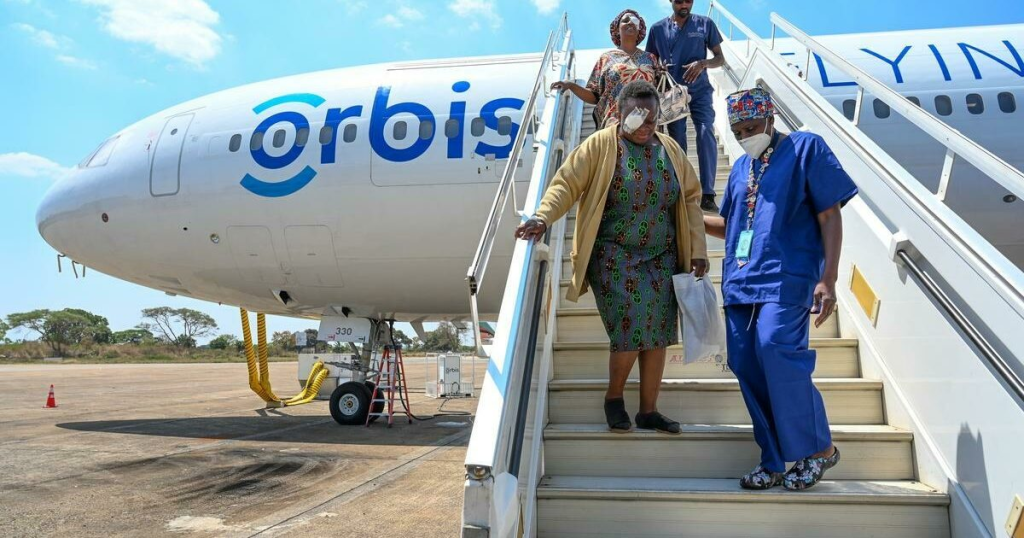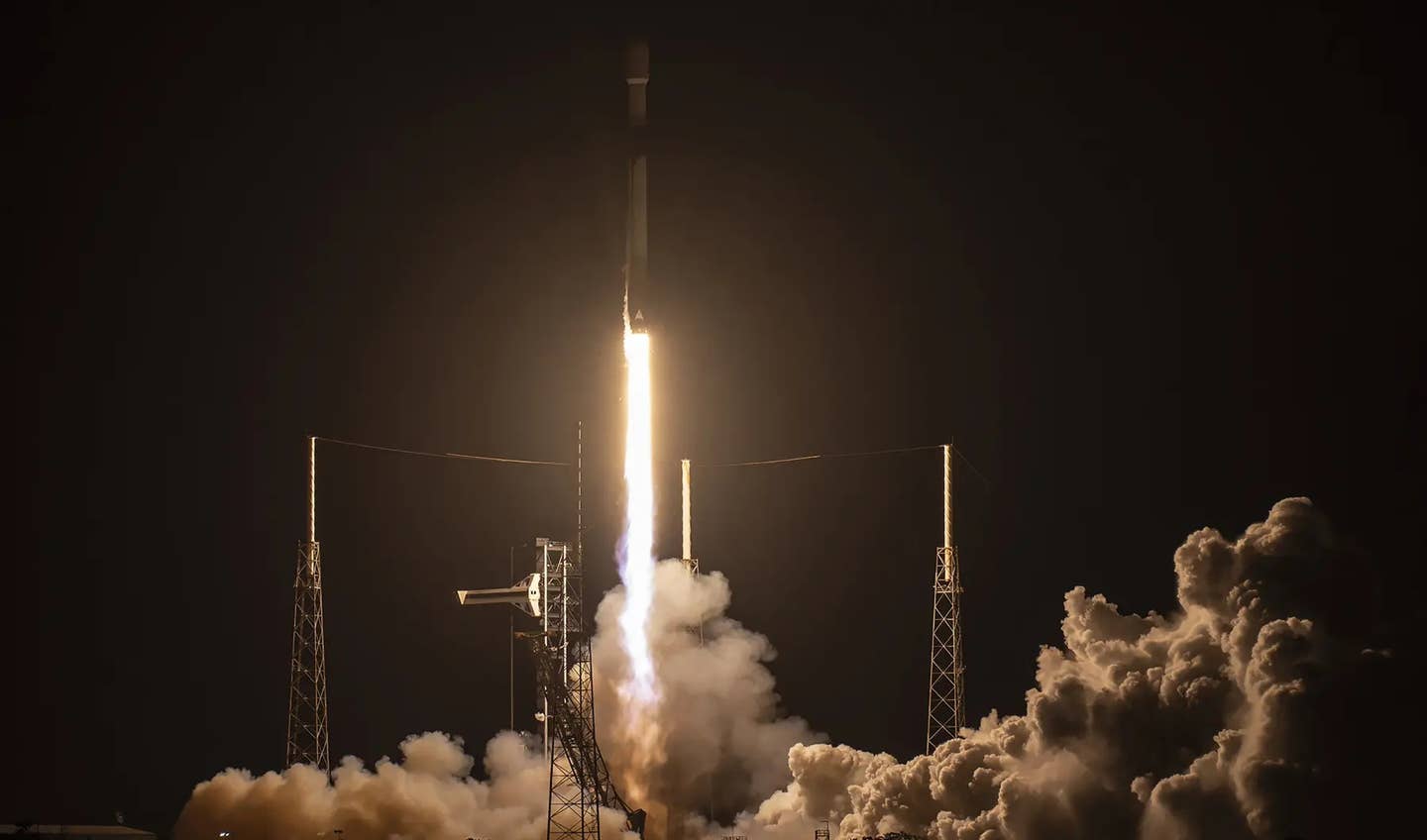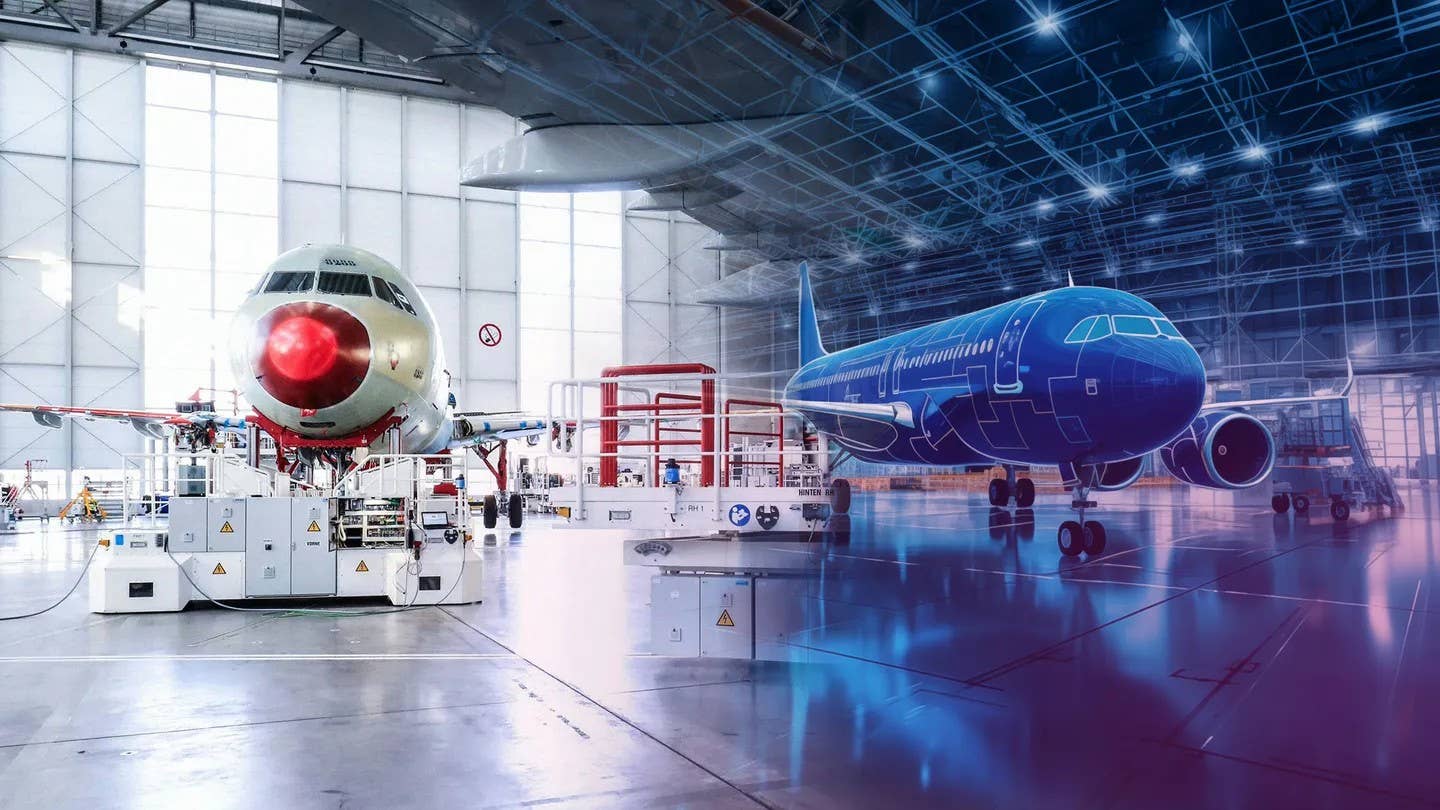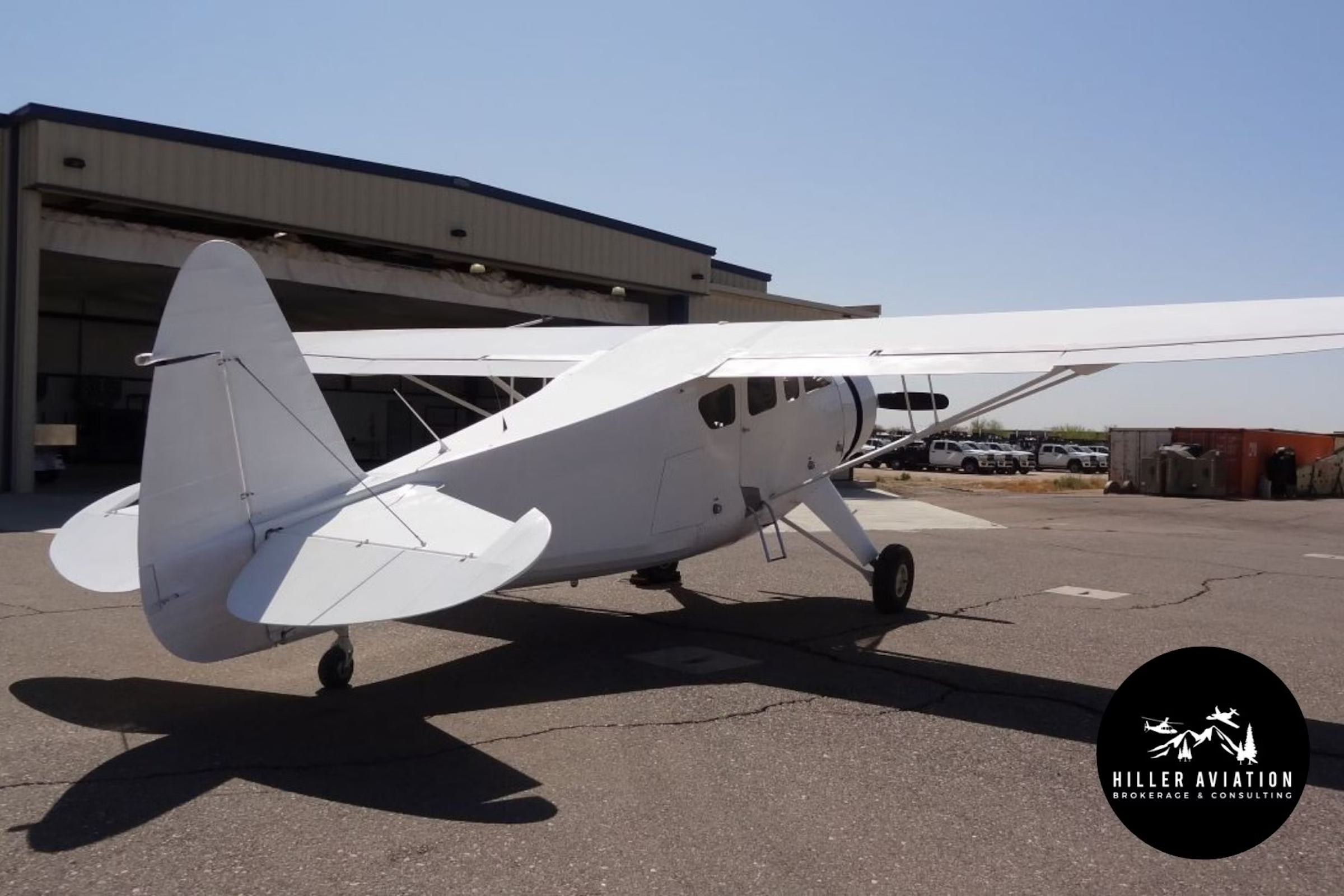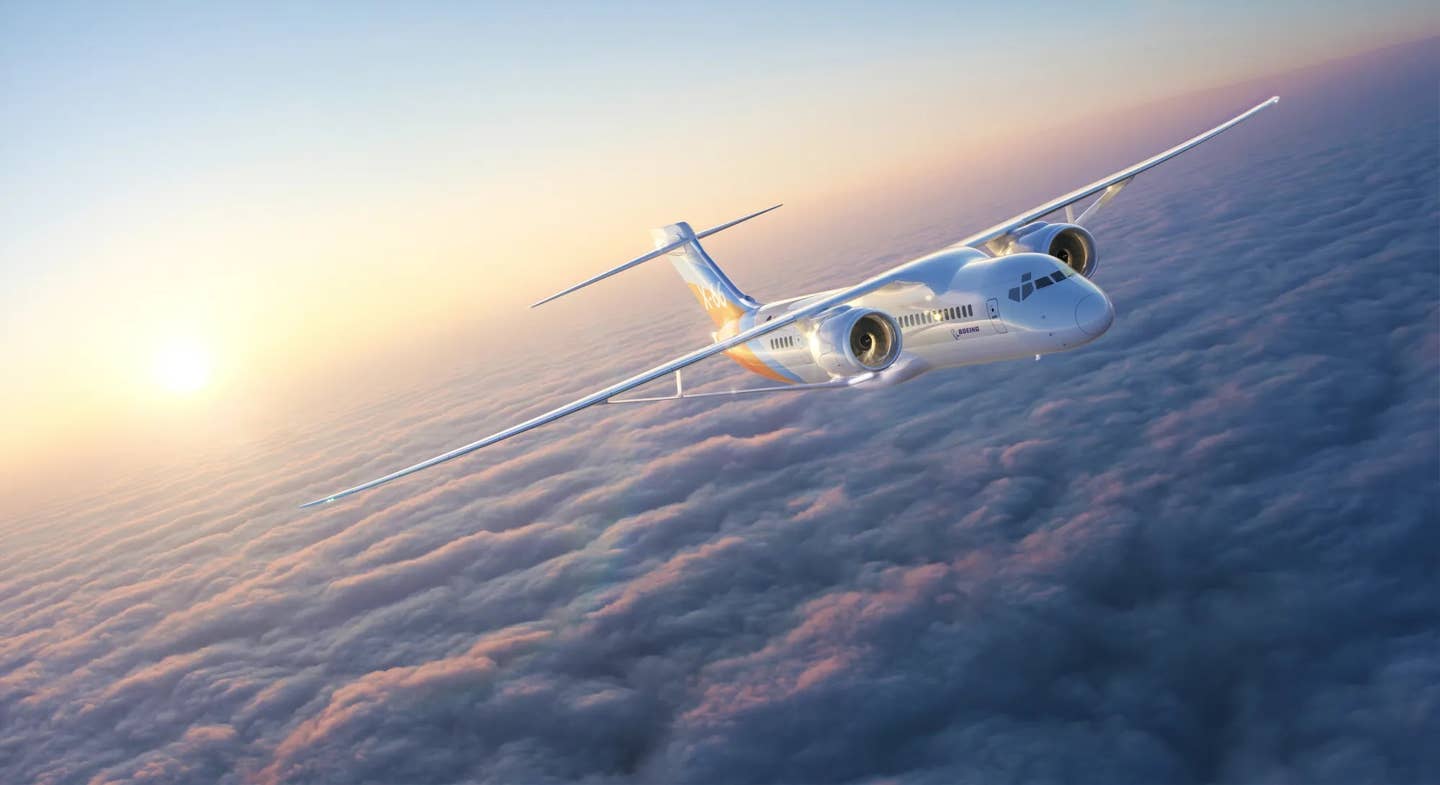SpaceX, Blue Origin, ULA Win Space Force Contracts Worth Up to $13.7B
Trio of launch providers is awarded a total of 54 national security spaceflight missions over about five years.
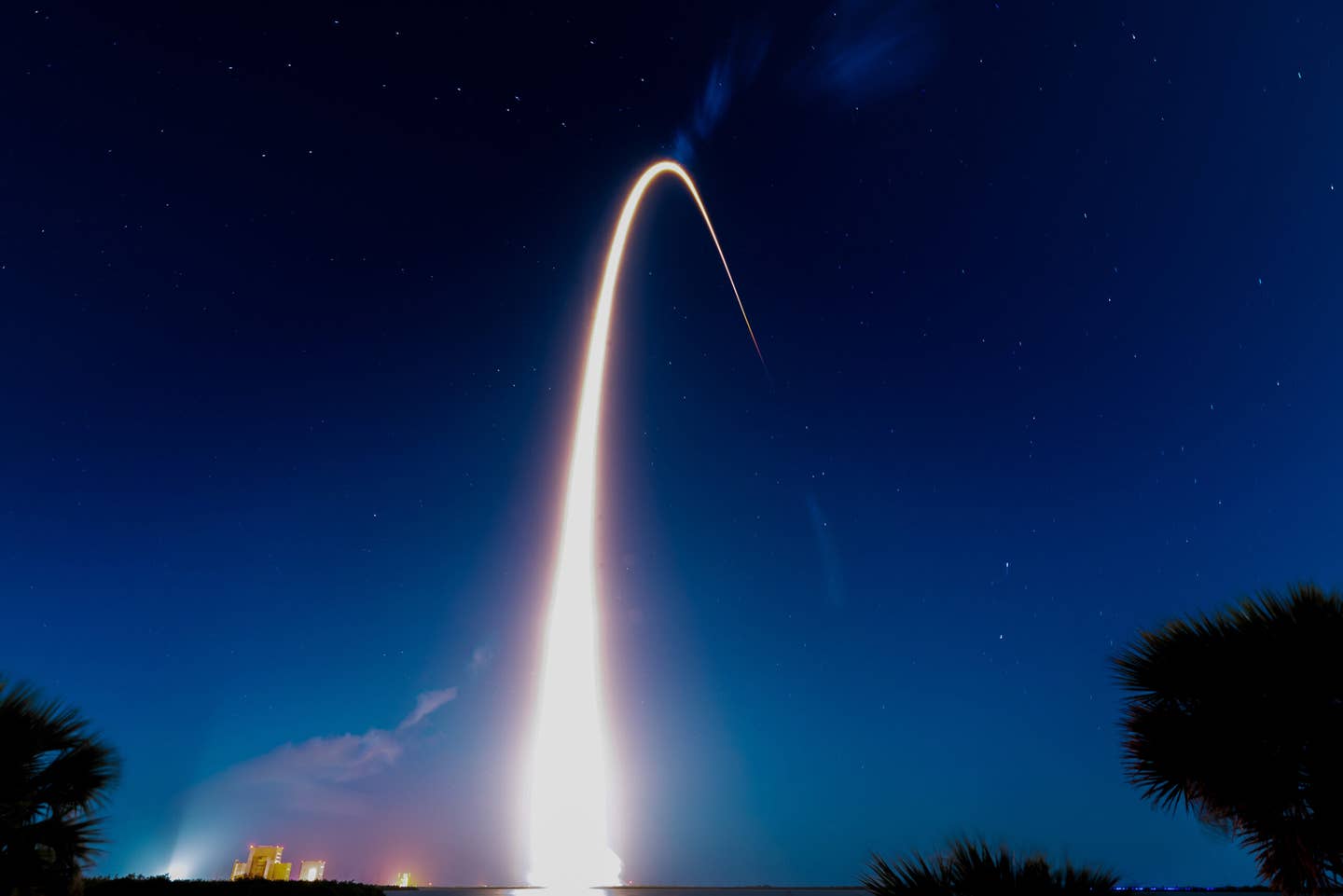
The U.S. Space Force launches a SpaceX Falcon 9 rocket from Space Launch Complex 40 at Cape Canaveral Space Force Station in Florida. [Courtesy: Joshua Conti/U.S. Space Force]
Launch providers SpaceX, Blue Origin, and United Launch Alliance—a joint venture between Boeing and Lockheed Martin Space—on Friday snapped up billions of dollars in national security launch contracts.
Space Systems Command, the branch of Space Force responsible for development, acquisition, launch, and logistics, estimated the value of the National Security Space Launch (NSSL) Phase 3 contracts—which cover about 54 missions—at $13.7 billion. SpaceX and ULA each are expected to receive north of $5 billion for about 28 missions and 19 missions, respectively. Blue Origin, which was not part of the NSSL Phase 2 cohort, is expected to secure about $2.4 billion for seven mission awards beginning in fiscal year 2026, the second year of a five-year order period (FY 2025 to FY 2029).
With Blue Origin joining NSSL Phase 2 providers SpaceX and ULA, the Space Force is increasing competition for the missions, which launch some of the military’s most sensitive and valuable technology to orbit. Missions are anticipated to take place between FY 2027 and FY 2032, two years after they are awarded.
“America leads the world in space launch, and through these NSSL Phase 3 Lane 2 contracts, we will ensure continued access to this vital domain,” said Major General Stephen Purdy, acting assistant secretary of the U.S. Air Force for space acquisition and integration.
Ramping Up
Launched by the Air Force in 1994 as the Evolved Expendable Launch Vehicle program, NSSL in 2018 began awarding contracts for next generation launch vehicles. To date, all missions have been flown by SpaceX’s Falcon 9 and Falcon Heavy, still in service, and ULA’s Delta IV and Atlas V, both retired.
“[NSSL] isn’t just a program. It's a strategic necessity that delivers the critical space capabilities our warfighters depend on to fight and win,” said General Chance Saltzman, chief of space operations for the Space Force.
In Phase 1, the Air Force contracted ULA, Blue Origin, and Northrop Grumman Innovation Systems (NGIS) to develop their respective launch vehicles: Vulcan Centaur, New Glenn, and OmegA, which NGIS cancelled in 2020. At the time, SpaceX’s Falcon 9 and Falcon Heavy were already certified and active.
All four companies bid for Phase 2 contracts, with ULA and SpaceX winning a combined $3.5 billion to launch about 30 missions from 2022 through 2026. Falcon rockets have so far completed five Phase 2 missions, including a handful of classified national security flights. The Space Force in March certified Vulcan, which could allow ULA to reenter the NSSL rotation as soon as this spring.
For Phase 3, the Space Force plans to go even bigger, more than doubling the number of missions on the Phase 2 manifest. That allowed it to award contracts in two “lanes”: Lane 1 for “commercial-like” missions with limited requirements, and Lane 2 for the “most demanding, least risk-tolerant payloads.” Lane 1 applicants only require one successful launch for certification.
Vote of Confidence
In March, Rocket Lab and Stoke Space were announced as Phase 3 Lane 1 providers, joining SpaceX, Blue Origin, and ULA. On Friday, the latter three firms received a renewed vote of confidence with their selection for the more demanding Lane 2.
“[Friday’s] award culminates nearly three years of government and industry partnership to increase launch resiliency and capacity,” said Brigadier General Kristin Panzenhagen, program executive officer for the Space Force’s Assured Access to Space directorate. “The result is assured access to space for our national security missions, which increases the military’s readiness.”
Panzenhagen in January said the Space Force aims to launch 18 Phase 2 missions in 2025, including 11 with Vulcan. It had been targeting mid-February for the vehicle’s certification. Phase 3 Lane 1 missions could fly before the end of the year.
Panzenhagen also said she expected New Glenn to be Phase 3 Lane 1 certified but notably made no mention of the vehicle’s inclusion in Lane 2. The massive rocket reached orbit on its maiden NSSL certification flight in January despite the loss of its reusable lower stage, which broke apart rather than landing on an ocean barge as planned. The FAA closed its investigation of the test flight last week, setting the stage for another New Glenn launch in the coming months.
Like this story? We think you'll also like the Future of FLYING newsletter sent every Thursday afternoon. Sign up now.

Sign-up for newsletters & special offers!
Get the latest FLYING stories & special offers delivered directly to your inbox

